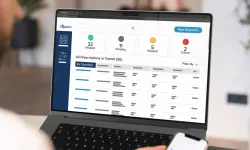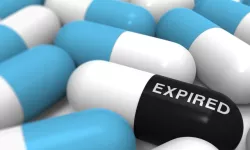In-Depth Content

The inclusion of virtual pharmacy in the inpatient hospital setting is a significant shift towards integrating technology with healthcare, presenting unparalleled opportunities to elevate patient care. As we progress towards the 2030 American Society of Health-System Pharmacists (ASHP) healthcare initiatives, the adoption and optimization of Virtual Pharmacy stand out as key priorities for integrated health systems.
Strategic Implementation and Focus Areas
The strategic deployment of Virtual Pharmacy has revolutionized traditional pharmacy roles by transitioning aspects of order verification to environments with fewer distractions. Virtual Pharmacy associates are equipped with a focused work queue that aligns with the organization's strategic goals. This approach has allowed Virtual Pharmacists to concentrate on high-volume orders needing quick turnaround times, specifically targeting departments such as the Emergency Room, Surgery, Maternity, Postpartum, and Nursery. By reallocating these tasks off site, on-site pharmacists are afforded the bandwidth to focus more on operational duties and specialized clinical care, perfecting the balance between efficiency and quality patient care.
Operational Efficiency and Patient Care
An extensive review of hospital operations in one health system from January 2018 to June 2023 illuminates the substantial impact of Virtual Pharmacy, particularly within the Emergency Department (ED).
Efficiency in Order Verification
A notable achievement within the Virtual Pharmacy initiative has been the significant improvement in the order verification process. Order verification within 10 minutes significantly improved by 16.7%, jumping from 73.6% to 90.3%. This progress not only met but exceeded the system's target, confirming over 90% of orders are verified within a critical time limit. This is only made possible by the improved efficiency of Virtual Pharmacy.
Accelerated Antibiotic Administration
The efficacy of Virtual Pharmacy extends to enhancing the timeliness of antibiotic administration for critical cases:
- Pre-Virtual Pharmacy: 28.2%
- Post-Virtual Pharmacy: 50.9%
- One specific Location:
- Baseline: 35.3%
- During Virtual Pharmacy: 68.6% (↑33.3%)
- After Virtual Pharmacy Removal: 54.9% (↓13.7%)
These statistics highlight Virtual Pharmacy's vital role in speeding up essential interventions, thereby improving patient outcomes.
Expansion Opportunities and Patient Engagement
Virtual Pharmacy's existing structure offers significant potential for growth and expansion to the outpatient settings. Examples include Medication Therapy Management (MTM) and patient counseling. By providing personalized care through tailored MTM and counseling, Virtual Pharmacy could significantly boost patient engagement, promote shared decision-making and adherence to treatment plans. This approach not only elevates patient safety and outcomes but also presents scalable opportunities for the further integration of Virtual Pharmacy services within the healthcare delivery framework.
Conclusion
Virtual Pharmacy is not an entirely new concept but is at the forefront of healthcare innovation and is strategically positioned to fulfill the ambitious goals of the 2030 ASHP healthcare initiatives. Through strategic implementation, operational efficiencies, and expansion opportunities, Virtual Pharmacy is reshaping the healthcare landscape, setting new benchmarks for efficiency, clinical outcomes and patient engagement. As the healthcare sector continues to evolve, the ongoing enhancement and integration of Virtual Pharmacy will be crucial in realizing a more efficient and patient-centric healthcare ecosystem.

Leonid Gokhman, PharmD, manager of pharmacy business operations at Harris Health System, takes a proactive approach to running his operation, rather than being reactive. He encourages his pharmacy, nursing, IT and revenue cycle peers to adopt this mindset.
“If you’re reactive, you’re creating so many other issues — not only for yourself, but for multiple teams,” Dr. Gokhman says. “If you're able to put things in place that prevent issues from happening in the first place, you drastically cut down on a lot of clutter, errors and unnecessary work.”
Part of taking a proactive approach means working directly with the frontline staff not only on project development and implementation, but maintenance as well. Staying within the pharmacy walls and only working with your team means you’re not getting the bigger picture of how the hospital system operates, he says.
Plus, when major departmental initiatives are carried out in silos, crucial components may be overlooked. This oversight could result in either beneficial or detrimental downstream effects for other departments.
Five years ago, he was asked to participate in the hospital system’s vaccine redesign project. When he first started the project, the error rate was almost 50%. (Yes, you read that right. 5-0.)
“If you have errors in your clinical documentation and on your charges, you will not get paid or get paid inappropriately,” Dr. Gokhman says. “As I was digging through the system build and working with nursing leadership — it became clear to me that the system build was way too complicated. Our providers had five different workflows, requiring them to memorize numerous charge codes to manually post administration charges and contend with confusing order names. This diverted their attention away from direct patient care.”
Five workflows were four too many. His first step was to consolidate multiple provider and nursing workflows into one. Next, vaccine order names were updated according to ISMP (Institute for Safe Medication Practices) and Epic guidelines. Finally, a system build was implemented to automatically post vaccine and vaccine administration charges based on the documentation for each vaccine.
“Keep it simple,” Dr. Gokhman says. “When frontline staff are presented with too many options, they are prone to choosing incorrectly or resorting to workarounds. These workarounds might seem beneficial, but on the frontend, they lead to order entry and documentation errors. This causes multiple coding, billing and reimbursement issues on the backend.”
By simplifying and automating the workflow, they’ve drastically cut down the number of errors. Recently, a third-party audit revealed a 100% vaccine billing compliance rate, surpassing the industry standard of 95%.

The day before I was expecting an employee to return from maternity leave, I received her resignation letter, citing reasons of wanting to focus on motherhood. The timing was unfortunate, but I was happy for her. As a mother, this made me wonder if I was making good life choices. As a manager, this made me feel like I’m competing with little babies for mom’s time and talents. How can we retain good employees when they’re in love with the competition? The truth is, we can’t. The kids always win, and they should. We can only hope to join mom in loving these little, squishy sugarplums by giving her the support she needs to excel at home and then in the workplace.
Raise Benefits Awareness
They say, “a baby changes everything,” and this extends to the need for benefits and the enrollment period. Benefits could be anything from financial planning, expanding insurance coverage and assigning beneficiaries, or simply knowing they have employee assistance for stress management. Having insurance coverage for breast pumps, lactation consultants and pelvic floor physical therapy is tangible proof of the company’s support for mothers of newborns. On-site childcare is an attractive benefit, too! Encourage expecting moms (and dads) to consult human resources and benefits management about what opportunities are available through your institution.
Support the Breastfeeding Journey
Time spent breastfeeding a child can equal as much time spent working a full-time job. The American Academy of Pediatrics (AAP) recommends exclusively breastfeeding for at least six months. Compare that to maternity leave, which can be as short at 6 weeks. That means new moms are working two jobs! Before she delivers, make her aware of lactation services which can include an on-site lactation consultant, time and space to express milk, and storage space for breastmilk. The AAP is an excellent resource for this, and they issued a news release in 2022 citing recommendations for corporate support of breastfeeding: American Academy of Pediatrics Calls for More Support for Breastfeeding Mothers Within Updated Policy Recommendations (aap.org)
Creative Scheduling & Cross-Training
Drug shortage mitigation proved to be a mere training ground when compared to navigating the workforce shortage, making employee retention seem more important than ever before. Overall, what moms need from their employer is to be able to leave work to care for their child without judgement from management and coworkers. The workflow should be designed so mom can meet the needs of her sick child, or attend a school function, without added guilt of her workflow left unattended. Creativity is key when it comes to meeting the needs in the department while balancing employees’ needs outside the department. This may mean schedule changes, creating PRN staffing requirements, or expanding benefits to part-time employees. Cross-training employees ensures the needs of the department are met when special occasions arise during this precious season of life.
Moms have a reputation for being pretty remarkable creatures. Research has shown that mothers’ brains are equipped to be “more efficient, flexible, and responsive” as a result of changes occurring in the perinatal period.1,2 That makes sense when we think of our cavewomen ancestors protecting their young, but these traits make valuable employees in today’s era, too. She may not be shooing away a sabertoothed tiger, but it can feel that way as she juggles the demands of work and home life. Working with employees as they venture through seasons of life, especially young motherhood, lets them know they are supported and valued at work, and creates a space for them to build a career.
These opinions are those of the author and not of Pharmacy Angle or USA Health.
Ref:
1 Kinsley, Craig Howard, and Kelly G. Lambert. “The Maternal Brain.” Scientific American, vol. 294, no. 1, 2006, pp. 72–79. JSTOR, http://www.jstor.org/stable/26061302.
2 Orchard, E.R., Voigt, K., Chopra, S. et al. The maternal brain is more flexible and responsive at rest: effective connectivity of the parental caregiving network in postpartum mothers. Sci Rep 13, 4719 (2023). https://doi.org/10.1038/s41598-023-31696-4.

VPL TrajectRx empowers outpatient pharmacies by giving them the cloud-based shipping, tracking and compliance solution they need to build cost-conscious, stronger, and smarter last-mile operations. Created for pharmacists by pharmacists, our clinically minded platform gets prescriptions out the door, tracks and traces them to their destination, communicates shipping updates to patients and staff, and compiles necessary reporting for proof of delivery. By minimizing distribution errors, enhancing operational efficiency, and reducing time spent on the phone, TrajectRx ensures a streamlined and effective pharmacy workflow.

Leonid Gokhman, PharmD, is a licensed, Epic Willow certified pharmacist who has more than 25 years of experience in the field of pharmacy. He has extensive experience in managing inpatient, ambulatory, and retail pharmacy operations, IT/informatics, value-added health economics, Formulary review/approval process, 340B Program, Medication Assistance Program, revenue cycle management, as well as managing both funded and unfunded patient markets.
For fifteen years, Dr. Gokhman has worked at the Harris Health System – a non-profit healthcare system located in Houston, Texas. For nine years, he’s managed the pharmacy business operations of the organization’s revenue cycle department. In his current role, he’s learned how crucial it is to have a pharmacist representation within the healthcare organization’s revenue cycle department.
Before his position, he said — much like the majority of pharmacists — he didn’t know much about the backend processes involved in medication billing, coding and reimbursements. As a frontline pharmacist, he was focused on his clinical work and patient care.
However, after learning about the inner workings of the revenue cycle processes, he’s developed a full understanding of the healthcare system’s frontend and backend processes. His knowledge and experience have allowed him to create and optimize all medication-related charging and billing processes.
This has ultimately contributed to more than doubling the organization’s cash collections, while saving millions of dollars through the 340B Program and medication assistance programs, and optimizing the organization’s Formulary.
Currently, he has three analysts working for him who are pharmacy technicians. He’s trained them to understand the system like he does. He shared a few examples of how being a pharmacist with knowledge about the revenue cycle can help your organization:

Centralizing pharmacy services is a popular topic, as health systems explore avenues that can bring value to the organization. The first step to centralizing services is determining what functions can be performed from a central location and the value of each. This will be specific to each health system as regulatory requirements are different in each state, as are the services offered by health systems, the prescription volume/mix, and the geography. Services that a central pharmacy can provide include mail order/specialty pharmacy, call center, prior-authorization, patient assistance, self-distribution/warehousing, repackaging, kit/tray management, training, order verification, and medication reconciliation.
Once a decision is made on the services, the next step is defining how each of the functions will be performed. Traveling around to the multitude of Central Pharmacies throughout the country you will see varying levels of automation versus manual processes. It is important to know about staffing limitations and address those through automation during this design phase. Automation vendors are expensive, long-term partners so this is a key decision point. Due diligence is needed, so leverage relationships with other health systems, GPOs, wholesalers, and potentially consultants, depending on the aptitude of your internal team. It is worthwhile to look outside of typical pharmacy vendors for technology solutions, as many of the activities performed from a central pharmacy are warehouse activities.
Another long-term decision is the floorplan of the central pharmacy. Even after the recent shift to move employees to work-from-home, most central pharmacies wish they had more space. There will be attempts to reduce square footage in favor of budget. If a compromise needs to be made on square footage, look to what employees could move to remote/hybrid, but be steadfast in your requirements for the operations and storage areas within the facility. Remember to define the footprint based off current opportunities AND potential future growth. It is much less expensive to plan for a potential 2nd floor upfront, rather than rip up concrete and replace support beams in the future.
Once the general floorplan is defined there will be a decision to buy existing property, build from scratch, or join existing property, which typically means co-locating with Supply Chain and/or Lab. If you are joining an existing centralized Supply Chain many of the vendor decisions may already be made (Warehouse Management Software, courier vendor, shipping software, etc.). If it’s a new build there will be a lot more decisions, but more freedom in design. Your ROI will be impacted by the location, and ability to tap into existing services.
Data is crucial in defining the revenue, costs, and savings available to the health system to support the business plan, as those will be the metrics that determine the viability of the facility. The goal is an autonomous pharmacy with 0 medication errors, 0 medication waste, and no manual intervention until medication is delivered to the patient. An autonomous pharmacy allows 100% of the pharmacists’ time spent on clinical activities, with 100% visibility into inventory levels system-wide, and 100% regulatory compliance. Lean on the wealth of data available through your EHR, dispensing software, automation software, and financial software to communicate the ROI of your proposed services. Be bold in your request of vendors, as much of the industry is inefficient today and is ripe for automation.
At this point, if your business plan supports a central pharmacy, be prepared for the multitude and magnitude of decisions that need to be made. Details matter, and there will be a lot of details. If you’ve built a custom home, you can appreciate the minutiae of building something from scratch. Defining every data/power drop, whether employees get a laptop or desktop, the number of monitors for an employee, furniture, signage, and all the way down to the location of each trash can. Do not underestimate the resource commitment from Pharmacy for the sheer volume of decisions that need to be made, the new technologies and software integration development needed, and the hiring required to open a new facility. Building out a new facility and team will demand significant resources, while the day-to-day functions of pharmacy will still need to be tended to.
Staffing a new facility is a challenge given the pharmacist and pharmacy technician shortage. Pharmacy will staff positions outside of the pharmacy department as well (Security, IT, Environmental Services, etc.). Lean on the leaders of those departments within your health system. Much of your time will be spent on interviewing and onboarding, which will all need to be timed out with a go-live date that is a moving target. Plan a calendar block for the interviews and create interview teams to tackle hiring as your team grows. This is another key focal point, because culture matters and as an organization scales you want to ensure your environment is a desirable workplace that can attract the top talent in a competitive market.
Go-live is likely a phased implementation, as it is typically too much to take on day one. Plan out your phases as many of the resources may overlap, or some of the functions may be required to go-live at the same time. With the knowledge you’ve gained with your implementation, share with other health systems. We are all in this together to provide first-class care for patients and to support the viability of the health systems in our community.

i-Health, Inc. is proud to support clinical research and advance scientific knowledge around probiotics, including a
recent investigator-initiated trial conducted by clinician researchers at Duke University using Culturelle® probiotics.

Drug shortages are becoming a pervasive global issue. In the United States alone, there were 309 active drug shortages at the end of the second quarter of 2023 — the most in nearly a decade and close to the all-time high of 320 shortages, according to a report by the American Society of Health-System Pharmacists. Causes of these shortages are varied and complex, ranging from manufacturing and quality issues to unexpected demand surges, posing significant risks to public health. However, the responsible use of evolving technology, especially Artificial Intelligence (AI), can be a valuable asset in addressing the drug shortage crisis. The National Artificial Intelligence Act of 2020 defines AI as “a machine-based system that can, for a given set of human-defined objectives, make predictions, recommendations or decisions influencing real or virtual environments. Here are a few ways in which healthcare systems can utilize AI-driven approaches to mitigate the impact of drug shortages.
AI-Driven Forecasting and Inventory Management: One of the most significant ways AI can combat drug shortages lies in its ability to forecast shortages before they occur. Conventional methods of demand forecasting rely on manual analysis and decision making and often fall short in capturing dynamic factors influencing supply and demand. In contrast, AI algorithms swiftly analyze diverse data sources such as historical shortage data, production capacity, regulatory trends, and market dynamics, achieving high accuracy in predicting potential shortages. By capitalizing on these predictions, healthcare systems can take proactive measures to mitigate shortages, such as increasing production capacity or securing alternative suppliers. Furthermore, AI-powered epidemiological models can forecast changes in disease prevalence and treatment demand, enabling healthcare systems to anticipate shifts in medication requirements and adjust procurement strategies accordingly.
Supply Chain Optimization: Pharmaceutical supply chains are complex and are notoriously susceptible to disruptions. However, AI’s data analysis prowess holds promise in optimizing the pharmaceutical supply network. Through predictive analytics and machine learning algorithms, AI can identify vulnerabilities in the supply chain, anticipate disruptions, and recommend strategic interventions to minimize risks, preventing shortages from happening in the first place.
Production Optimization/Quality Control: Manufacturing quality issues and production inefficiencies are major reasons for drug shortages. AI can enhance production processes within pharmaceutical manufacturing facilities, minimizing drug shortages. By analyzing production data in real-time, AI can identify inefficiencies, optimize manufacturing workflows, and reduce waste. Furthermore, AI-driven quality control systems can enhance the reliability and safety of pharmaceutical products by detecting defects, anomalies, or deviations from specifications in real-time, minimizing the likelihood of production delays due to regulatory compliance issues.
Alternative Therapies/Enhanced Clinical Decision Support: AI can support clinical decision-making in managing drug shortages. Though still in its early stages, AI-driven clinical decision support systems (CDSS) can analyze patient data, treatment guidelines, and drug availability information to recommend alternative therapies or dosing regimens when preferred medications are unavailable. By integrating clinical expertise with real-time data analytics, AI-driven CDSS can empower healthcare providers to navigate complex treatment scenarios and optimize patient outcomes amidst drug shortages.
Overall, AI presents a promising path forward in addressing the persistent issue of drug shortages. By integrating AI-based tools, healthcare systems can not only predict and prevent shortages but also optimize supply chains, streamline production, and support informed clinical decision-making. While challenges remain, responsible implementation can ensure that AI’s potential in tackling drug shortages is fully realized, achieving better patient outcomes and improving the global public health.

Lifepoint Health is a leading healthcare provider that serves patients, clinicians, communities, and partner organizations across the healthcare continuum. The company has a growing diversified healthcare delivery network comprised of 60 community hospital campuses, more than 60 rehabilitation and behavioral health hospitals, and 250 additional sites of care, including managed acute rehabilitation units, outpatient centers, and post-acute care facilities.
Historically, the process for managing expired drug waste was not clear for this complex organization, and corporate oversight proved inefficient in providing guidance or standardization across the enterprise. Poor data visibility from the reverse distributor was the primary hurdle to oversight. Lifepoint Health worked with its reverse distributor to improve data analytics tools to help improve outcomes for its 60 acute care community-based hospitals.
With potentially millions of dollars in annual expired waste costs, enterprise-wide level oversight of expired drug waste is necessary and is dependent on clear visibility into actual expired drug volume and cost data to effect change.
Methods
The first step was to improve the expired drug waste data collection process and data visibility. Lifepoint’s Pharmacy Operations lead worked with the reverse distributor’s team to develop a quarterly report worksheet that provided accurate detailed expired waste data per facility per quarter. The report consisted of the following information:
- Division-level aggregated data
- Facility-level totals and line-item data
- Creditworthy Return Benchmarking Data:
- National
- Corporate
- Division
- Facility
- Non-creditworthy expired returns Reason Codes
- Hazardous waste codes
Secondly, a PowerPoint Summary Report was developed for specific facilities. Due to the considerable number of hospitals, inclusion criteria were developed to determine which hospitals would receive a quarterly PowerPoint Summary Report and which would not.
Summary Reports are described below:
- PowerPoint Content
- Creditworthy returns, non-creditworthy returns, and total expired drug waste cost per facility
- Total expired drug line items and % of Division Total expired waste line items
- Non-creditworthy return totals per reason code
- RCRA U and P listed HD Returns (if applicable)
- Raw return data for non-creditworthy non-controlled drugs for top 150–200-line items.
- Actions to decrease expired drug waste, guidance on what to include in reverse distributor returns and what not to return.
The PowerPoint template was completed with data from the reverse distributor’s quarterly report for each eligible hospital and emailed to the Director of Pharmacy and Division Director of Pharmacy Operations with requests to review the report for opportunities for improvement regarding expired drug waste management.
Results
The reports and recommendations provided to the Directors of Pharmacy resulted in a 4% decrease in expired drug waste volumes, a 9.1% increase in creditworthy returns, and a 16.4% decrease in cost reduction from 2020-2022.
Conclusion
The creation of a reverse distributor quarterly detailed Expired Drug Review Report was key to central oversight of expired drug waste for Lifepoint Health’s acute care hospitals. The reports allowed for timely analytics and process improvement recommendations.

Antimicrobial stewardship programs (ASPs) are critical tools for promoting the safe and effective use of antimicrobial drugs. ASPs are not developed directly for reducing healthcare costs, but good stewardship leads to more cost-effective care. This includes impacting drug expenditures as well as other costs.
Pharmacy expertise is one of the CDC Core Elements of ASPs in hospitals. Regulatory bodies such as The Joint Commission and The Centers for Medicaid and Medicare Services endorse the critical role of pharmacy expertise in ASPs. However, activities of antimicrobial stewardship pharmacists can vary significantly between organizations. Combine this with a general lack of understanding of what ASP pharmacists do and there is no surprise a gap can often be observed between what pharmacy team members think ASP pharmacists should do versus what ASP pharmacists actually can do. Further complicating the issue, variability is a major commonality across ASPs, since each organization has its own specific patient populations, epidemiology, drug use patterns, physical resources, medical services, staff strengths/weaknesses, technology, administrative structure, and organizational priorities.
Even though ASPs are complex, there are many instances where common ground can be observed across sites. For example, programs often need to focus resources on appropriate management of urinary tract infections, respiratory tract infections, and skin and soft tissue infections since they are all common infectious processes. As programs aim to address high-priority items there are also financial targets that may be at play for the department or organization. For the antimicrobial stewardship pharmacist this commonly involves engaging in measures to control drug-related costs while ensuring optimal care.
Each year the American Journal of Health-System Pharmacy publishes an article about national trends in prescription drug expenditures, including projections for the next year. This is an excellent resource for identifying which drugs should be on your radar for high economic impact potential. In the July 2023 edition of the publication which displays 2022 data with predictions for 2023, HIV medication bictegravir/ emtricitabine/ tenofovir (Biktarvy) ranked 8 in the top 25 drugs by expenditures overall, pneumococcal conjugate vaccine ranked 17 in the top 25 drug expenditures in clinics, and remdesivir (Veklury) was the top drug expenditure in hospitals (for the second year running). By drug category, antivirals ranked third, systemic antiinfectives ranked eighth, and antifungal agents ranked twenty-fourth. It’s likely 2024 will have some of the same high-cost drugs as 2023.
In light of the above information, it may be helpful to discuss antimicrobial drug costs in the context of what antimicrobial stewardship pharmacists can do. That will be the focus of this article. Here I will discuss my top 5 high-cost antimicrobials for hospitals to watch in 2024 and how your antimicrobial stewardship pharmacist can have an impact. Please note that cost-savings/avoidance opportunities can vary by practice setting, some drugs will be discussed by category, and this is by no means an all-inclusive list of high-cost antimicrobials to look out for in 2024.
1. COVID-19 medications: Remdesivir (Veklury®) and nirmatrelvir/ritonavir (Paxlovid®)
Although the pandemic is over, COVID-19 is here to stay. With the musical chairs of prevalent SARS-CoV-2 variants and different types of immunity in the community, the rate of severe/critical COVID-19 has thankfully become less frequent while mild-moderate COVID-19 has become relatively more common. There is of course no way to predict the future, but it is highly likely COVID-19 will come in waves as respiratory viruses tend to do each year.
For severe/critical COVID-19, intravenous remdesivir will most likely continue to be a mainstay of therapy. Exceeding $550 per vial, a 5 day course of remdesivir is over $3,300. ASP pharmacists can impact remdesivir use practices by implementing and overseeing criteria for use which are enforced by electronic medical systems and/or pharmacy staff verifying orders. Activities can include ensuring reasonable use as well as avoiding excessively long durations of treatment or delay to discharge. ASP pharmacists can be a critical resource for bridging prescriber awareness to local guidelines, based upon institutional data and trends.
For mild-moderate COVID-19, commercially available oral nirmatrelvir/ ritonavir is the preferred option (except when issues such as drug-drug interactions are a problem). At just under $1500 for a 5 day course, nirmatrelvir/ ritonavir is less expensive than remdesivir, but it is still high cost compared to most antimicrobial drugs on the market. ASP pharmacists can help promote using nirmatrelvir/ ritonavir over remdesivir when both are an option for a hospitalized patient, which supports better treatment and reduced expenditures. Monitoring data, engaging prescriber stakeholders, and providing targeted education may serve to promote optimal use of nirmatrelvir/ ritonavir.
Molnupiravir (Lagevrio®) approved under an Emergency Use Authorization is another COVID-19 medication to be aware of, but it’s much less likely to be used in the hospital than remdesivir or nirmatrelvir/ ritonavir, since it is third-line for mild-moderate COVID-19 and clinical data supporting it’s efficacy are much less favorable as compared to nirmatrelvir/ ritonavir.
2. Beta-Lactams for drug-resistant gram-negative bacteria
Some of the highest-cost antibacterial drugs fall into this category, and include:
- Sulbactam-durlobactam (Xacduro®)
- Meropenem-vaborbactam (Vabomere®)
- Imipenem-cilastatin-relebactam (Recarbrio®)
- Ceftolozane-tazobactam (Zerbaxa®)
- Ceftazidime-avibactam (Avycaz®)
- Cefepime-enmetazobactam (Exblifep®, not priced yet but expected to be expensive)
- Cefiderocol (Fetroja®)
Most of these antibiotics fall into the $750-$1300 per day range, but it does depend on renal function, dosing, and contracting. The mix of use on these antibiotics will vary depending on local epidemiology and prescriber preferences. Caring for immunocompromised patients or those from a local nursing facility may be a big driver of drug use for multi-drug resistant organisms, which is where these antibiotics are most commonly employed.
ASP pharmacists and infectious diseases physicians should arguably be involved with every case in which one of these antibiotics is prescribed. ASP pharmacists should work with local stakeholders to steer reasonable selection for initiation, streamlining after 48-72 hours, safety monitoring, and local protocol development with formulary decisions. In addition, ASP pharmacists can work with pharmacy buyers and patient assistance program contacts to control inventories, ensuring the antibiotics that are expected to be needed are available, but while also ensuring excessive stock is avoided and vial replacement programs are leveraged.
3. Intravenous vancomycin
In most hospitals intravenous vancomycin remains the mainstay for empiric treatment of severe infections suspected to involve gram-positive bacteria such as methicillin-resistant Staphylococcus aureus (MRSA). While vancomycin drug acquisition costs are not near what is seen with the newer beta-lactam/ beta-lactamase inhibitors, the whole price of vancomycin is considerable and may even contribute to longer than necessary lengths of stay. Vancomycin takes up a lot of time for pharmacists, nurses, and labs. Using it smarter or avoiding it all together can yield economic benefits which impact multiple departments and reduce the risk for acute kidney injury.
ASP pharmacists can help promote use of vancomycin alternatives, de-escalation, and discharge facilitation. There are a long list of ways ASP pharmacists can engage with this, which includes but is not limited to:
- Engaging lab on workflows to leverage MRSA nares PCR to de-escalate therapy
- Working with emergency department prescribers to selectively avoid unnecessary initiations for indications such as non-purulent skin infection or urosepsis
- Promoting oral antibiotics (including now inexpensive oral linezolid) to help facilitate discharge
- Early switch to daptomycin for discharge or in patients at high risk for acute kidney injury
- Employing a vancomycin monitor to engage stakeholders in improving practices
- Teaching pharmacy staff how to individualize vancomycin care to optimize workflows which reduce burdens on pharmacists, nurses, and lab staff
A programmatic approach to optimizing vancomycin practices is recommended, rather than attempting to assign the ASP pharmacist to serve as the daily front-line vancomycin dosing and monitoring point-person.
4. Vaccines
Use of vaccinations within the hospital are impacted by patient populations, regulatory requirements, and organizational priorities. Vaccines for influenza, pneumococcus, tetanus, diptheria, hepatitis B, and rabies (including rabies immune globulin) may be of particular note due to volume of use and acquisition cost. Vaccines such as those for RSV, varicella, and SARS-CoV-2 may be less relevant to the hospital setting if more encouraged for outpatient use, but may also be relevant in the hospital. Hospitals should consider their individual historical and expected vaccine use.
ASP pharmacists can assist with developing as well as evolving standardized processes for patient identification and delivery of vaccinations, working with medical, nursing, informatics, and other staff. ASP pharmacists may also lead medication use evaluations while overseeing pharmacy learners (e.g., student interns, residents), which support identifying opportunities to enhance local practices.
Vaccine-related work is not something an ASP pharmacist needs to be deeply engaged in, but they should be involved in the programmatic monitoring of routine practices and engagement for workflow improvements. ASP pharmacists may also be good team players for vaccine inventory control, especially when shortages are expected (e.g., the tetanus vaccine supply issue of 2024).
5. HIV medications
Bictegravir/ emtricitabine/ tenofovir (Biktarvy®) costs around $140 per pill. It is one of the most important HIV medications today as a well-tolerated single pill regimen recommended by HIV.gov guidelines. Other guideline-recommended antiretrovirals such as rilpivirine (Edurant®), and emtricitabine/ tenofovir alafenamide (Descovy®) also carry significant acquisition costs at approximately $50, $75 per pill, respectively.
ASP pharmacists can assist with developing programs focused on antiretroviral stewardship and formulary management. They can also support inventory control measures, which includes consideration for working with some medications that have short-date expirations after opening. Since many hospitals do not deal with a high volume of patients with HIV, ASP pharmacists can serve as a critical resource to ensure complete regimens, avoiding missed doses, and proper monitoring.
Closing Comments
Institutions can choose to employ their ASP pharmacist as programmatic workflow coordinators, front-line infectious diseases clinical pharmacists, or a mix of the two. How ASP pharmacists are empowered has a great impact on their ability to mitigate costs related to antimicrobial agents such as those discussed here. There can be a great benefit to having ASP pharmacists engaged in pharmacy operations (including inventory control), clinical pharmacy workflow management (including staff interventions), and front-line services (including guiding the use of high-cost beta-lactams).
Several other items of interest not discussed here may include antifungal drugs (e.g., posaconazole [Noxafil®], isavuconazole [Cresemba®]), C. difficile therapies for treatment (e.g., fidaxomicin [Fidaxomicin®]) or prophylaxis (e.g., Vowst®, Rebyota®), and long-acting agents primed for outpatient infusion (e.g., dalbavancin [Dalvance®], oritavancin [Orbactiv, Kimyrsa], rezafungin [Rezzayo®]).
Find Timothy Gauthier, Pharm.D, BCPS, BCIDP as @IDstewardship on X and Instagram.
The views and opinions expressed in this article are those of the author and do not necessarily reflect the policy or position of any previous, current, or potential future employer.